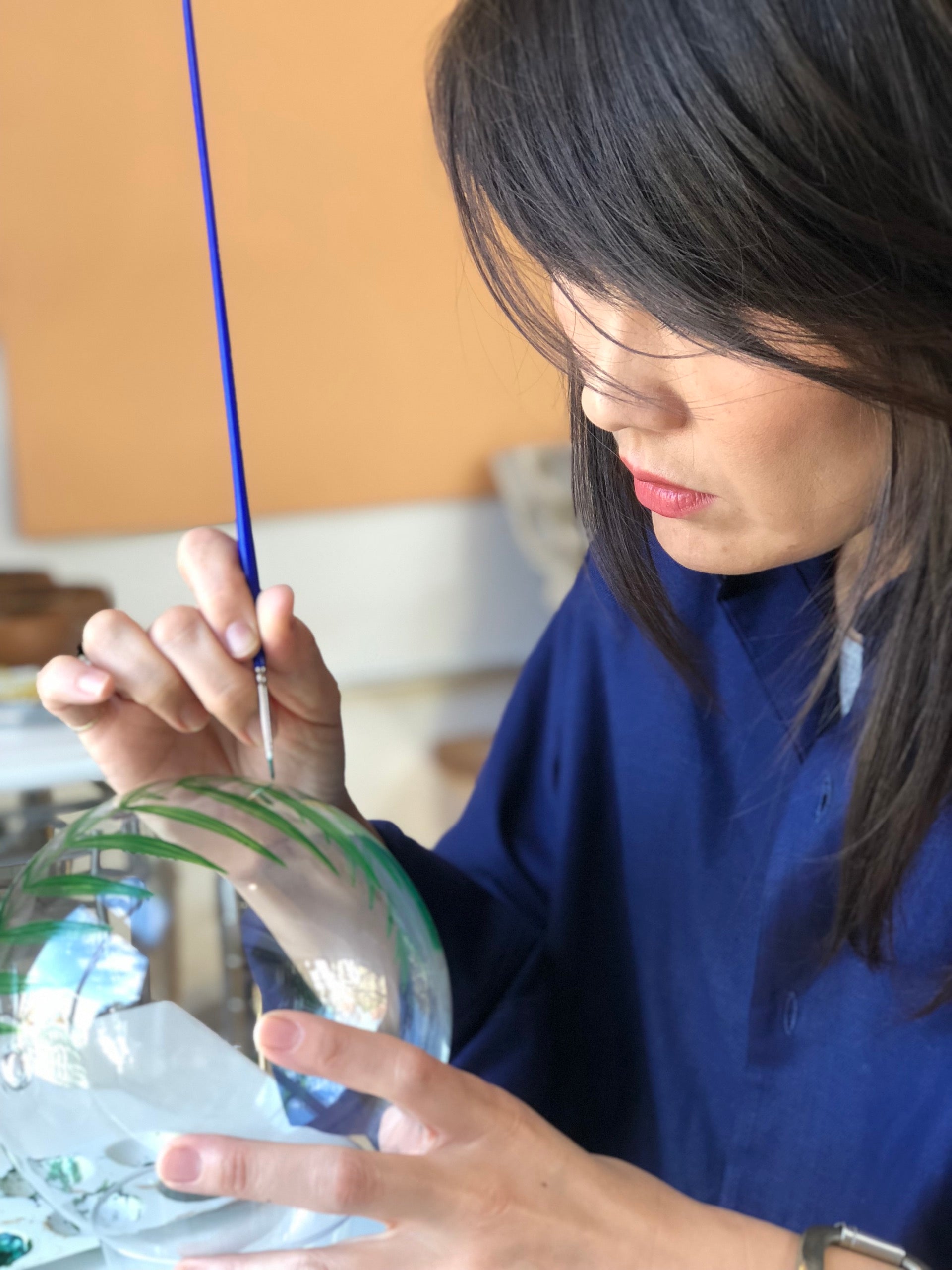Ones to Watch
The New Biomorphism
Three rising studios crafting organic sculptural forms by hand
For our latest “Ones to Watch” column, we spotlight three rising studios embracing handmade techniques to create objects that celebrate natural forms and materials.

Before launching their Brooklyn-based studio, husband-and-wife team Jean and Oliver Pelle pursued promising careers in architecture. They met while earning master’s degrees at Yale School of Architecture and then went on to work for high profile firms—Jean for Tod Williams Billie Tsien Architects and Oliver for Robert A.M. Stern Architects, among others. Just over a decade ago, they made the bold decision to pivot, spurred by their love of creative experimentation and hands-on making. Today, Pelle specializes in crafting made-to-order lighting, furniture, and objects that blend architectural thinking with sculptural expression.

“We like the idea of working within the lineage and history of design, but it’s a faraway backdrop for us,” the duo explain about their approach. “Generally, we are interested in creating new work that we feel is adding to the dialogue. We build upon our knowledge of materials and develop our own unique methods to create work that we want to see in the world. This is what keeps us engaged in the process and makes our day-to-day life at the studio exciting.”

Design editors and interior designers are excited too, most recently about the studio’s delicate Lure collection, an evolving series of flora-shaped lighting designs handmade in cotton paper. “After much experimentation, we found that we could cast cotton linter into any form, achieving an incredible amount of detail,” they tell us. “We also realized that because it was paper, we could paint onto the surface and add more depth. Since then, we have been developing new designs that incorporate more color.” Wary of committing their work to narrow definitions, they add: “But we don’t think that craft exists only with the handmade. We find a high degree of craft is achieved in the act of coordination and thinking through all aspects of assembly as well.”

Based in Delhi, artist-designer Alex Davis studied mechanical engineering before earning a master’s degree in Industrial Design from Domus Academy in Milan. Soon after, he took a position in architect Stefano Giavannoni’s office, where he developed products for brands like Alessi and Magis. This experience sparked in him an abiding passion for sheet metal, which compelled him to look past the material’s traditional industrial associations and to see instead a medium for hand-wrought artistic exploration. Fast forward to the present, Davis’s eponymous studio focuses on crafting bespoke and limited edition sculptural metal objects that embody an array of botanical forms.

“I often base my works on my travels and experiences of nature, but I take an ‘expressionist’ approach that gives the forms a completely fresh spin in terms of materials, scales, and contexts,” Davis explains about his practice. “Materiality is extremely important in my works, drawing on processes that bridge tradition and innovation. When you step outside of conventional wisdom, industrial materials like stainless steel can be sculpted and molded like clay. I very much like this play.”

The dramatic results that Davis achieves from simple sheets of copper, brass, and stainless steel are informed by his engineering studies and strong background in architecture and design work. But he is quick to recognize the contributions of the artisans working in his studio. “My team’s impeccable skills are essential to my pieces,” he explains. “We primarily handcraft the works using traditional sculpting techniques but also occasionally use computer modeling and machines. Since each work is unique, we devote a lot of time to creating compositions and hand finishing.”
Atra

Alexander Díaz Andersson studied at the Istituto Europeo Di Design in Madrid before moving to the Yucatán Peninsula to establish his own voice in furniture design. Born and raised in Sweden to a Swedish father and a Mexican mother, his vision for a new design brand grew out of his dual heritage, inspired by Sweden's enduring achievements in mid-century modernism and Mexico’s exceptional woodworking tradition. Following a few different paths and eventually relocating to Mexico City, Díaz Andersson is now the creative director of Atra, the brand he founded 15 years ago, dedicated to crafting organically sculptural furnishings using high-end natural materials.

“My approach toward design is often luxurious and futuristic yet informed by traditional craftsmanship, modernist theories, and a mix of high and low visual culture,” Díaz Andersson says of Atra’s distinctive style. Commenting on his brand's signature materials and processes, he adds, “80% of my production is handmade by expert artisans whom I’ve been working with for many years. Some of the techniques I use have been in Mexico long before me; some I developed with my team of expert metallurgists, stone carvers, carpenters, and more.”

Though craftsmanship is a driving force behind everything Díaz Andersson designs, he is not afraid to harness the power of technology to achieve the curving, undulating silhouettes he conceives. He concludes: “We started Atra with an emphasis on excellence in handcraft and traditional woodworking. At some point though we chose to integrate sophisticated technology into our operation. Some of the custom pieces we have developed are only possible because of our CNC or laser machine.” ◆
